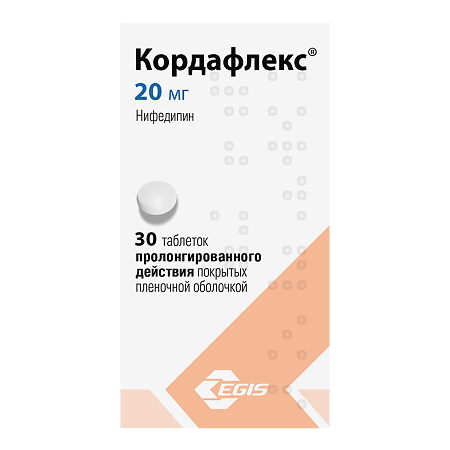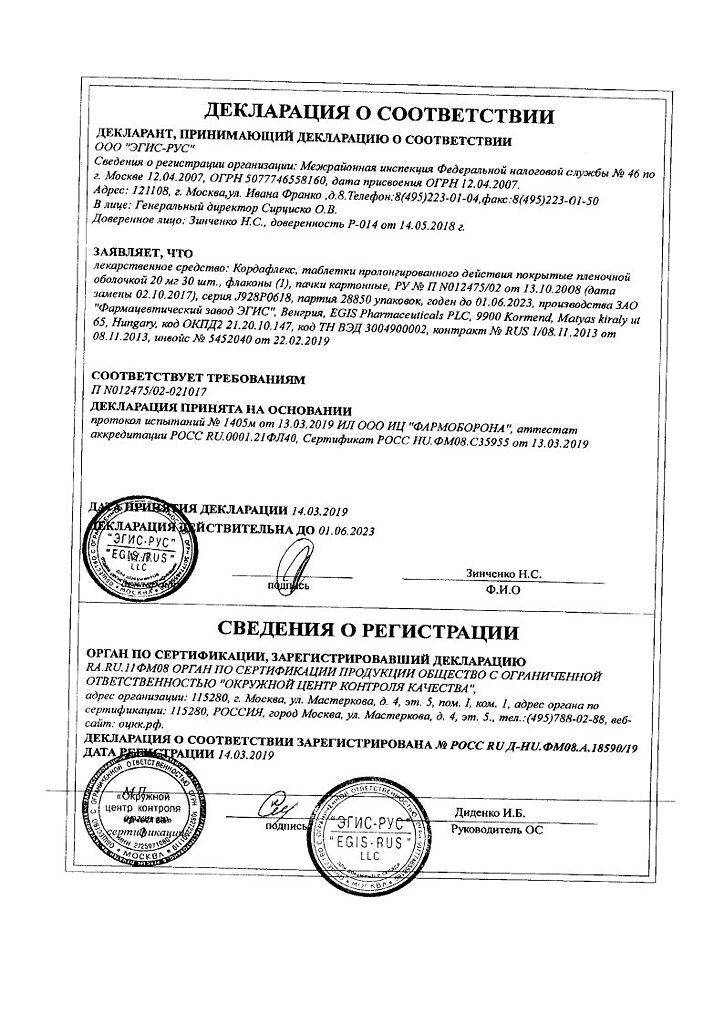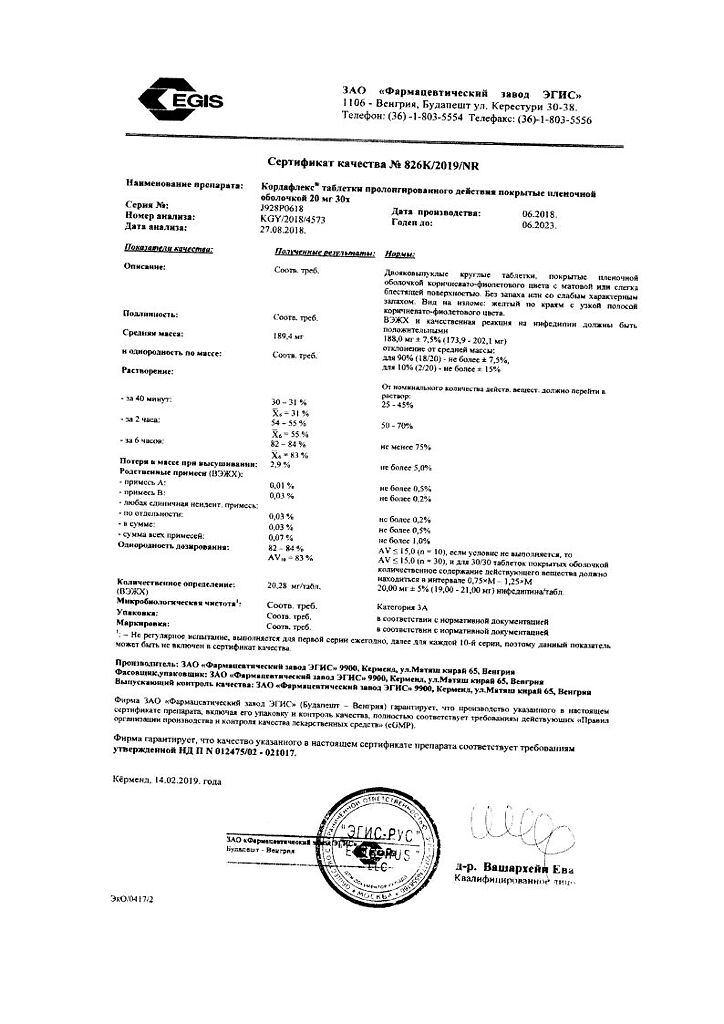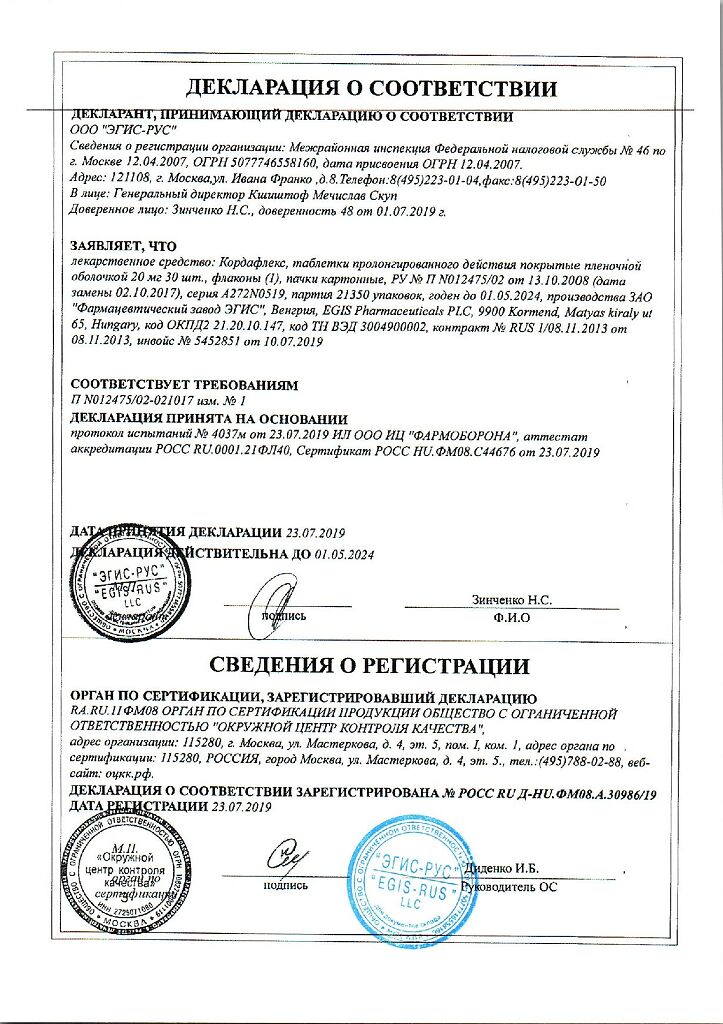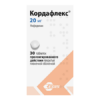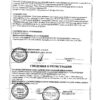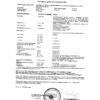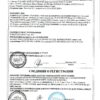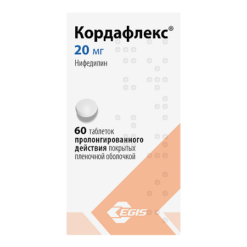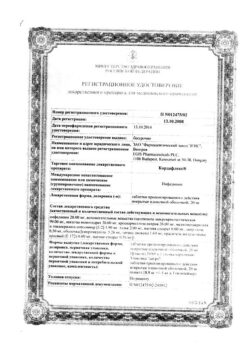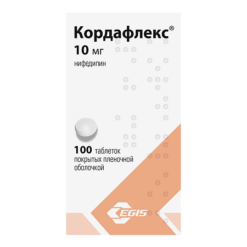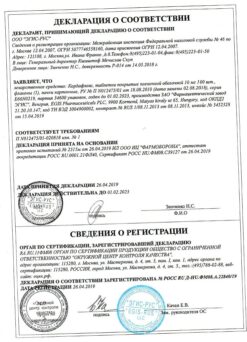No products in the cart.
Cordaflex, 20 mg 30 pcs
€3.36 €3.05
Description
CORDAFLEX is a class II selective calcium channel blocker, a dihydropyridine derivative. Causes antianginal and hypotensive effects.
Dilates coronary and peripheral arteries, reduces myocardial oxygen demand by reducing the afterload on the heart. It has a slight negative inotropic effect.
It has practically no antiarrhythmic activity. Does not have suppressive effect on the cardiac conduction system. As a result of decreasing peripheral vascular resistance and lowering blood pressure it can cause minor reflex tachycardia.
Indications
Indications
Ischemic heart disease: for prevention (in some cases – relief) of attacks in various forms of angina pectoris, including angiospastic (Prinzmetal’s angina); arterial hypertension of various genesis; Raynaud’s syndrome.
Active ingredient
Active ingredient
Composition
Composition
Tablet:
How to take, the dosage
How to take, the dosage
Adults are prescribed 1 tablet of Cordaflex 10 mg. 3-4 times per day. If necessary, the dose is gradually increased to 20 mg 2 times per day. The maximum daily dose is 40 mg.
In case of course therapy, a prolonged form of the drug, Cordaflex Retard 20 mg, is recommended. The drug is prescribed in doses of 20-40 mg 2 times a day.
The starting dose of the drug is reduced by half in elderly people.
The drug is taken regardless of meals.
Interaction
Interaction
The combined use of nitrates with Cordaflex significantly enhances the antianginal effect.
The concomitant use of Cordaflex and beta-adrenal blockers is effective and safe in most clinical situations, since it leads to summation of antianginal and antihypertensive effects of the drugs, but in some cases pronounced arterial hypotension and heart failure may occur.
The combination of Cordaflex with clonidine (clopheline), alpha-methyldopa (dopegit), diuretics, captopril, octadine, prazosin, reserpine is considered rational in terms of increasing the hypotensive effect; Cordaflex is not used with apressin.
In concomitant use of Cordaflex and calcium preparations the effect of nifedipine decreases due to antagonistic interaction caused by increased concentration of calcium ions in extracellular space.
The hypotensive effect of Cordaflex when used concomitantly with cimetidine is significantly increased due to the increased concentration of nifedipine in plasma, which requires adjusting the doses of the drugs.
With Cordaflex the quinidine concentration in serum decreases significantly which is likely due to decreased quinidine bioavailability, induction of enzymes inactivating it, increased hepatic and renal blood flow, increased drug distribution volume, and changes in hemodynamics.
If Cordaflex is discontinued after concomitant use with quinidine, there is a transient increase (approximately 2-fold) in serum concentrations of the latter, which reaches peak levels on day 3-4 after discontinuation, as well as QT interval prolongation on ECG.
Hence, caution should be exercised when using a combination of quinidine and Cordaflex, especially in patients with left ventricular function depression.
The effects of Cordaflex will be impaired when concomitantly administered with rifampicin.
Special Instructions
Special Instructions
The antihypertensive effect of Cordaflex is enhanced in hypovolemia. Decreased pulmonary artery pressure and hypovolemia after dialysis may also enhance the effects of the drug, in this regard, reduction of the drug dose is recommended.
In rare cases, chest pain (angina pectoris due to paradoxical ischemia) may occur at the beginning of treatment with Cordaflex or when the dose is increased shortly after taking the drug. If a causal association between taking the drug and angina pectoris is found, treatment should be discontinued.
In arterial hypertension or coronary artery disease, abrupt withdrawal of nifedipine may cause a hypertensive crisis or myocardial ischemia (ricochet phenomenon).
If the patient requires surgery under general anesthesia during therapy, the anesthesiologist should be informed about the therapy with Cordaflex.
In elderly patients, decreased cerebral blood flow due to acute peripheral vasodilation is more likely.
The consumption of alcoholic beverages is not recommended during the course of treatment with Cordaflex because of the risk of excessive BP decrease.
Pediatric use
In the absence of sufficient clinical data, the drug is not recommended for use in children and adolescents less than 18 years of age.
Impact on driving and operating machinery
In the initial, individually determined period of use of Cordaflex, driving and engaging in other potentially hazardous activities requiring quick psychomotor reactions are not allowed. During further treatment, the degree of restriction is determined depending on the patient’s individual response to the drug.
Contraindications
Contraindications
Cardiogenic shock; severe arterial hypotension (systolic BP below 90 mmHg); severe aortic stenosis, idiopathic hypertrophic subaortic stenosis; first trimester of pregnancy; severe heart failure; hypersensitivity to nifedipine.
Side effects
Side effects
Cardiovascular system disorders: facial hyperemia, marked arterial hypotension, peripheral edema, tachycardia; rarely – increased angina pectoris attacks (drug withdrawal is required), increased heart failure, fainting.
CNS and peripheral nervous system disorders: headache, dizziness, fatigue, sleep disorders (somnolence or insomnia); in single cases – mood swings, vision disorders; with prolonged use in high doses – numbness in extremities, tremor.
Digestive system disorders: diarrhea, constipation, nausea, heartburn; rarely (with long-term use of the drug) – dry mouth, flatulence, intrahepatic cholestasis, increased activity of liver transaminases; in single cases – gingivitis, anorexia.
Hematopoietic system: rare – thrombocytopenia, thrombocytopenic purpura, leukopenia; in rare cases – anemia.
Urinary system: increased daily diuresis; rarely – deterioration of renal function in patients with chronic renal failure.
Muscular system disorders: myalgia; in single cases – arthritis.
Endocrine system disorders: in single cases – gynecomastia, hyperglycemia (disappear completely after discontinuation of the drug), weight changes, galactorrhea.
Allergic reactions: rare – urticaria, exanthema, pruritus; in some cases – autoimmune hepatitis.
Other: fever; in single cases – weakness, sweating, fever, chills, photodermatitis.
Overdose
Overdose
Symptoms: marked arterial hypotension, headache, collapse, tachycardia, sinus node suppression, bradycardia, arrhythmia.
Treatment: given the lack of a specific antidote, in cases of early detoxification, gastric lavage is performed with the administration of activated charcoal. Once, and then, if indicated, as a prolonged infusion, 10% solutions of calcium gluconate or calcium chloride are administered intravenously.
In case of a sharp decrease in BP, an intravenous infusion of norepinephrine is indicated, in the development of heart failure – glycosides.
Pregnancy use
Pregnancy use
Cordaflex® is contraindicated for use in the first trimester of pregnancy.
The use of Cordaflex® in pregnant women is indicated only when BP normalization is not possible with other hypotensive drugs.
Because nifedipine is excreted with breast milk, use of Cordaflex during lactation should be avoided or breastfeeding should be stopped during drug therapy.
Similarities
Similarities
Additional information
| Weight | 0.045 kg |
|---|---|
| Shelf life | 4 years |
| Conditions of storage | In a light-protected place at 15-25 °C |
| Manufacturer | EGIS, Hungary |
| Medication form | slow-release tablets |
| Brand | EGIS |
Other forms…
Related products
Buy Cordaflex, 20 mg 30 pcs with delivery to USA, UK, Europe and over 120 other countries.

